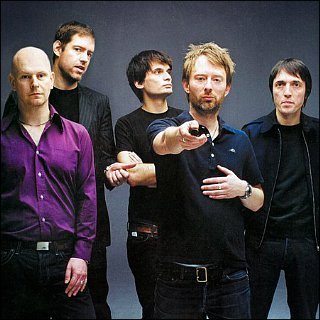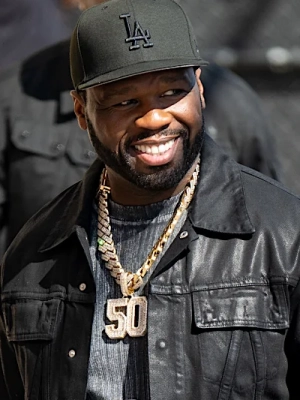 The members of Radiohead were bound to meet each other when they enrolled in the same school. Abingdon School for boys in Oxfordshire witnessed a history in the making when the then-twelve-year-old Colin Greenwood and his younger brother Jonny Greenwood bumped into Thom Yorke who shared the same interest with them, music. In the same place, they also met future band mates such as Ed O'Brien and Phil Selway but it was only years after that that a band was formed. 'On a Friday' was officially brought to life in 1986, the year when they would sneak into school's music room just to rehearse their latest composition. "School was bearable for me because the music department was separate from the rest of the school. It had pianos in tiny booths, and I used to spend a lot of time hanging around there after school," Yorke recalled. They received a support from their music teacher, Terence Gilmore-James, who according to the band was the necessary backbone to their creativity development. While juggling with school work, they landed local gigs in Oxford but fame did not come as fast. It took them a graduation and some mundane months in University before going full-time with the profession.
The members of Radiohead were bound to meet each other when they enrolled in the same school. Abingdon School for boys in Oxfordshire witnessed a history in the making when the then-twelve-year-old Colin Greenwood and his younger brother Jonny Greenwood bumped into Thom Yorke who shared the same interest with them, music. In the same place, they also met future band mates such as Ed O'Brien and Phil Selway but it was only years after that that a band was formed. 'On a Friday' was officially brought to life in 1986, the year when they would sneak into school's music room just to rehearse their latest composition. "School was bearable for me because the music department was separate from the rest of the school. It had pianos in tiny booths, and I used to spend a lot of time hanging around there after school," Yorke recalled. They received a support from their music teacher, Terence Gilmore-James, who according to the band was the necessary backbone to their creativity development. While juggling with school work, they landed local gigs in Oxford but fame did not come as fast. It took them a graduation and some mundane months in University before going full-time with the profession.
After getting nowhere with their respective part-time jobs, the band recorded demo tapes and landed more live gigs in 1991. Their music captured the attention of one audience, Chris Hufford, who forwarded the news of their talent to producer Bryce Edge. Hufford took in the band's demo tapes and acted as their manager. While working in a record shop, Colin met an EMI rep named Keith Wozencroft who helped the band to strike a deal with the major label in late 1991. Based on the request made by the recording house, 'On a Friday' changed their stage name to 'Radiohead' after a song from Talking Heads' album 'True Stories'. Creating a trust circle for their talent, EMI signed them for six albums productions. The first attempt, however, was not exactly smooth for their EP 'Drill' was generally not accepted well in the market although it contained the early version of their claim-to-fame single, 'Creep'. Based on Yorke's experience with the opposite sex while in University, 'Creep' was then developed further to become their first single out of the band's debut album 'Pablo Honey'. Still, the album was not a breakthrough for Radiohead when it was released in February 1993 because 'Creep' was deemed "too depressing". The song was taken off from Radio 1 play list after only spun twice. However, the sound that was arguably not popular in that time frame slowly garnered attention among alternative rock fans that it took over the second position on Billboard Rock Modern chart.
It then reached #7 on U.K. Singles chart, prompting a nationwide success that brought them into the spotlight. The sudden fame almost broke them apart, mainly from the pressure of extensive touring and playing the same song over and over. The first Radiohead gigs were attended primarily for the performance of 'Creep', if they tried to play anything else, the crowd would reduce to mildness. To anticipate this, the band recorded an EP called 'My Iron Lung' in 1994 to introduce new materials to their growing fan base. Yorke described one of the tracks, 'My Iron Lung' as a metaphor for the way 'Creep' had both sustained the band's life and constrained them at the same time. Having through such phase, a second album was quickly prepared with the help from renown producer John Leckie. Emphasizing on the depth rather than its commercial factor, 'The Bends' was released in May 1995 to surprisingly, a warm welcome. The same album also made them, for the very first time, "fulfilled" as band because not only were they satisfied with the studio work but also overwhelmed by their fans' reaction. By this time, Radiohead was considered one of those acts that revived the second Britpop invasion in the U.S.
It took them two years to complete the third studio album, 'Computer OK'. This album marked the band's independence in the production as well as their first experimental piece. After completing a tour with R.E.M. and Alanis Morissette, the band took more radical approach in doing 'Computer OK' by taking their time during the recording sessions. For one thing, the band never expected that they could reach the same success 'The Bends' did and decided that it was time to change the musical and lyrical direction. On contrary to their own expectations, 'Computer OK' (1997) was a commercial success and a highly-acclaimed piece of work not only in U.K. but also Stateside. While it was predictably no. 1 in U.K., the album entered the notoriously hard-to-break U.S. Billboard Hot 200 chart at #21 and went on selling double platinum after that. The next year, the album received multiple nominations at two important music awards events, the BRIT Awards and the Grammy Awards. In the former, the band stayed at being nominee but in the later they managed to take home one prize 'Best Alternative Music Performance' out of the two categories they were nominated in.
If previously they started off as supporting act in tours, they gained enough respect to be the headliner in the 1997-1998 tour which is dubbed 'Against Demons'. Again the pressure was more than they could bear. Yorke cited that months after that, he constantly felt isolated and depressed every time he picked up the guitar to write music. The band almost walked separate ways after the tour was ended but soon realized that they owed each other another studio session. They were back in the booth in 1999 to record the next album. Unfortunately the established musicians had their own minds on how the album was gonna be like. This led to a temporary friction that was quickly overcome with the agreement on a new sound. Once again having Nigel Goodrich on-board, they recorded the album in Paris, Copenhagen, Gloucestershire and Oxford with more audible electronic sound. It was the combination of anticipation after the victorious 'Computer OK' and the advance technology that allowed the leaking of songs that propelled the fourth studio album, 'Kid A', to #1 in Billboard Hot 200 and being certified platinum in the first week of its release in October 2000. All of this without any released single and video for publicity. Eight months later, the fifth studio album 'Amnesiac' which recording process took in simultaneous turn with 'Kid A' was released.
'Kid A' brought them another Grammy win for 'Best Alternative Music Performance' in 2001 while in the following year 'Amnesiac' stopped at being nominated in the same category. 'Amnesiac' was often regarded as the B-side of 'Kid A' and the 'less of the two' although Yorke denied this saying that they are twins which are separated at birth. Still, both albums resound the complication that the band tried to create through their music. The return to the more straightforward album was found in 'Hail to the Thief'. Its buzz was not as loud as its predecessor but still, the fifth album that was released in 2003 only strengthened their place in the music industry for it largely received positive reviews from the critics and another commercial success. Many nominations and countless tours after, the band wound down to a hiatus in 2004 only to focus on their solo works. By this time they have completed the 6-albums contract with EMI and was without label when they began working on the seventh studio album in 2005. Again, the band took their time in working on this one and were not bothered to get themselves signed when the record was completed in October 2007. In several messages after that, Yorke often hinted their intention to be a free agent in the release of the album. It was made true. 'In Rainbows' was released for download-only in late 2007 and fans could pay any price they wanted, including none. This was criticized as a cocky movement from the band but proved genius and highly-effective when the decision to have it on standard CD was materialized in early 2008. The album went straight to #1 on Billboard Hot 200 after selling 122,000 copies.








